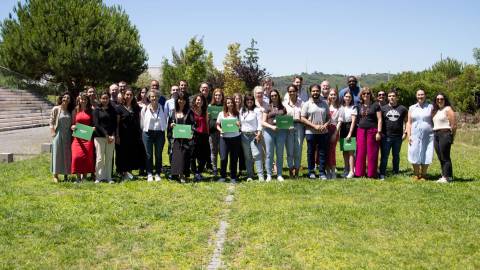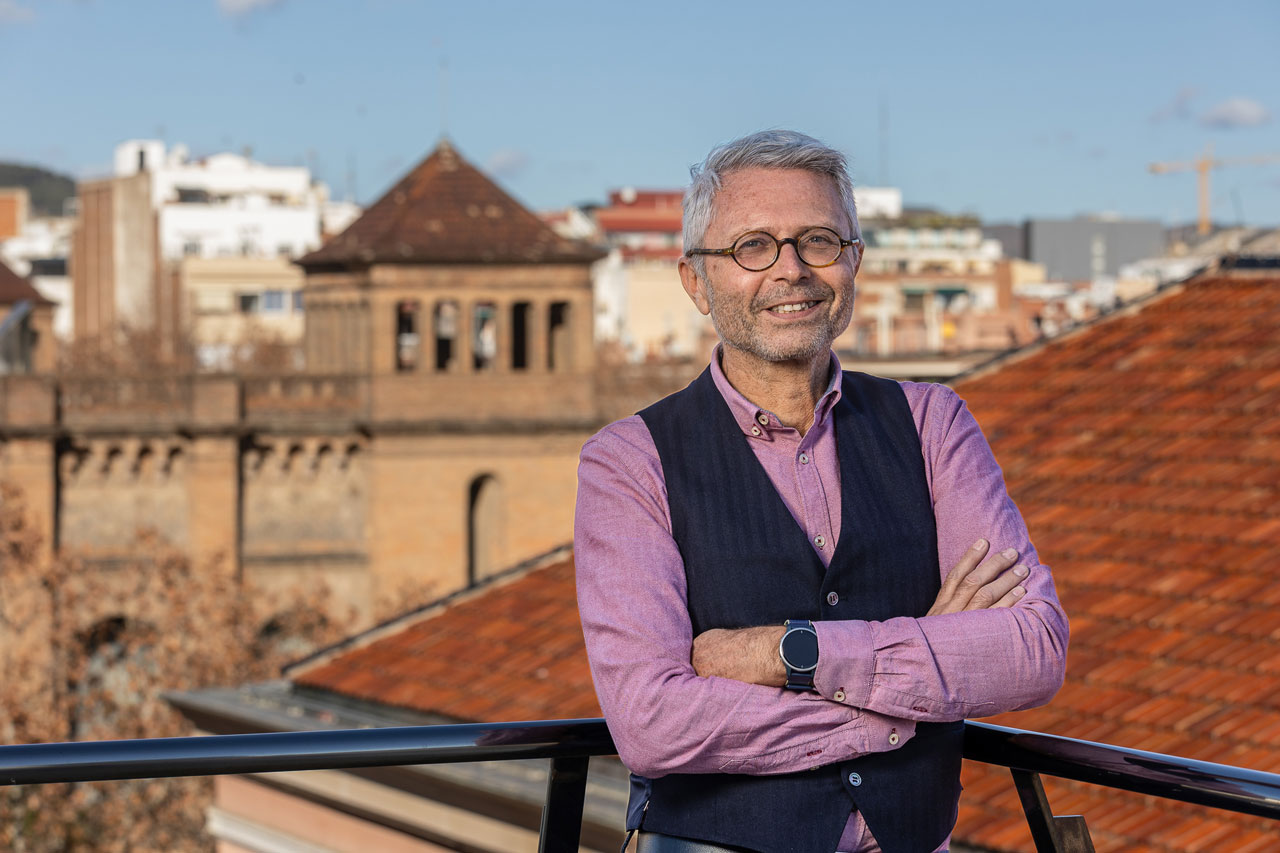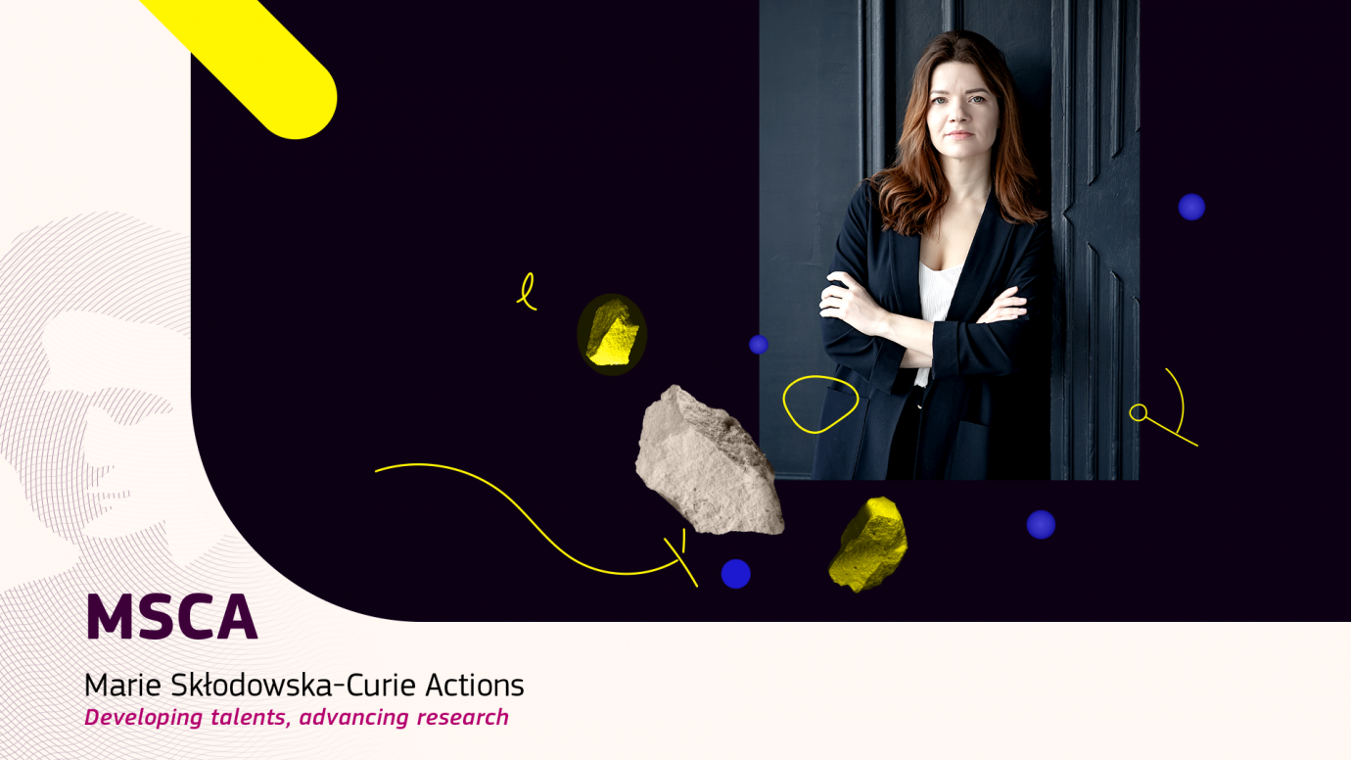EUTOPIA Doctoral Summer School: a very special summer school with an eye on the future

Go to content Navigation Direct access Connection

You are here :

In April 2024, EUTOPIA focuses on the Humanities and Social Sciences. Pompeu Fabra University-Barcelona is a reference centre for the study of these disciplines. The Culture and Socio-Ecological Dynamics (CASEs) research group in the Department of Humanities is a clear example.
Marco Madella, an ICREA research professor at UPF, leads it. Specialized in archaeobotany and environmental archaeology, his main interests include understanding the socio-ecological dynamics of past human populations in extreme environments, both in terms of aridity and humidity.
Madella oversees projects like MAPHSA, focusing on preserving South American archaeological heritage. He underscores the group’s international reach, fostering worldwide diverse perspectives on heritage preservation and environmental sustainability. He emphasizes archaeology’s pivotal role in understanding history and adapting to climate change, citing its insights into past agricultural practices. Discussing UPF’s Centre for Digital Humanities, he underscores its role in interdisciplinary collaboration and innovation. Moreover, Madella advocates for drawing lessons from historical agricultural practices to ensure future food security: he stresses the importance of cultural sensitivity in implementing sustainable changes and recognizing the diverse cultural influences on agricultural transformation processes.
The CASEs research group is involved in projects worldwide, from South America, the Middle East, South West Asia, and East Africa. What is this internationalization due to? What do all your projects have in common?
The internationalization of the CASEs research group responds to several fundamental reasons that reflect the global nature of the challenges and opportunities in the field of archaeological research. This internationalization also seeks to build meaningful collaborations to advance the understanding and resolution of common challenges on a global scale. The geographical diversity of the projects allows a more complete and enriching view of the research topics.
Our projects often require an interdisciplinary perspective that combines knowledge from several areas, such as archaeology, environmental sciences, technology and social sciences.
Many of the research topics addressed by our group are relevant globally. Heritage preservation, environmental sustainability, water management, and cultural adaptation to changing conditions affect communities worldwide. Having projects around the world allows us to address these challenges in a more comprehensive and contextualized way. Also, our projects usually require an interdisciplinary perspective that combines knowledge from various areas, such as archaeology, environmental sciences, technology and social sciences.
In addition, international collaboration facilitates access to experts and diversified resources, which enrich the research approach. By working in different regions, researchers in the CASEs group can be exposed to experiences and specific knowledge in each area. This contributes to a more complete understanding of local challenges and the formulation of solutions adapted to particular regional contexts.
Archaeological projects, including archaeobotanical ones, are often valued less than those in other scientific fields. Why is research in this field essential, and what can this study of the past teach us?
Archaeological research, including archaeobotanical studies, plays a fundamental role in our understanding of the past and offers several significant contributions. Archaeological finds help reconstruct human history and understand societies’ evolution over time. Archaeobotanical studies are crucial to understanding the origins and evolution of agriculture. Analyzing ancient plant remains can help reveal both agricultural practices and crops used and understand the adaptability of ancient societies to changing environmental conditions, which has important implications for food security, especially in the current climate change situation. Archaeobotanical remains also provide valuable information about the historical biodiversity of plants and their relationship with human communities. This may affect species conservation and understanding of the interactions between humans and their environment.
Archaeological finds help reconstruct human history and understand societies’ evolution over time.
Despite these significant contributions, archaeological research sometimes receives less attention or funding, indeed, than other scientific fields. However, its importance in understanding our history and in contemporary decision-making
At the beginning of 2023, the UPF received nearly two million euros from the Arcadia Fund to lead the MAPHSA project to preserve South America’s pre-Columbian archaeological heritage. You are the leading researcher on this project. Have you already started developing it? What phase is it in?
The first year of work has been very fruitful, and we can consider ourselves satisfied with the successes achieved so far. By 2023, 9,342 archaeological sites in Brazil and 9,317 archaeological sites in Colombia have been incorporated through automatic analysis of pre-existing data. Additionally, the inclusion of 1,796 sites that had never been published, meaning their data was unavailable, was achieved.
MAPHSA focuses on developing an open-access database for pre-Columbian archaeological sites in Brazil and Colombia. This database is designed to integrate, from the same project, existing data and new findings, which are detected through remote sensing technologies and predictions through machine learning. It uses open-source software, such as Arches and QGIS, aligned with FAIR (findable, accessible, interoperable, and reusable) principles.
The initial data processing for machine learning was carried out successfully. Using information from publications, we mapped archaeological sites in rainforest areas, intending to develop the dataset to train machine learning and eventually automate site detection. We also integrate data from deforested areas, including structures such as geoglyphs, to be used with historical satellite images to assess heritage deterioration. In addition, we design a “proof of concept” model using remote sensing to model the habitats of two important trees in the Amazonian Eastern Lowlands and explore their relationship with current human settlements in the Colombian Amazon.
Field validation efforts focused on two areas in Colombia. In the Sierra Nevada de Santa Marta, they covered an area of 6 km2 through surveys and satellite images, which led to the documentation of 298 new archaeological sites. In addition, three additional excavations were made to improve the chronological understanding of this region. In the Ciénaga Grande de Santa Marta, approximately 5 km2 of surveys were carried out, which revealed the presence of eight pre-Hispanic shell deposits (geological deposits of shells and other remains of molluscs and fish). Finally, the collaboration with Magdalena University in Colombia focused on training indigenous communities, especially around the Línea Negra de Santa Marta, about the work done in the area and the possible benefits for the communities.
Why is it essential to detect and preserve cultural heritage and knowledge?
Heritage and cultural knowledge are fundamental to the identity of communities and societies. Preserving these cultural expressions helps maintain a living connection to the past while strengthening identity and a sense of belonging. This perspective contributes to global cultural diversity. Each community brings unique perspectives, traditions and practices that enrich the world’s cultural heritage. Also, heritage is a means of transmitting history and traditions from generation to generation. It ensures that this cultural diversity is not lost and that future generations understand their heritage. Finally, cultural heritage can play a role in sustainable development as it contributes to cultural tourism and the local economy. Adequate heritage preservation can provide income and employment without compromising cultural integrity.
Adequate heritage preservation can provide income and employment without compromising cultural integrity.
In short, detecting and preserving cultural heritage and knowledge is essential to maintaining the diversity and richness of humanity’s cultural heritage while promoting understanding, respect and sustainable development over time.
Do the administrations of the countries you visit apply the necessary policies to combat threats and ensure this preservation?
The effectiveness of policies to preserve cultural heritage can vary considerably between different countries and regions. In many places, governments and administrations have implemented policies and measures to combat threats and ensure heritage preservation. These policies may include enacting heritage protection laws, allocating funds for conservation and restoration, implementing educational programs, and collaborating with international organizations.
International collaboration and ongoing commitment are essential to address the challenges and ensure the long-term preservation of cultural heritage.
However, significant challenges, such as a lack of resources, pressure from urban development, looting and illicit trafficking of cultural objects, natural disasters, and armed conflicts, can also threaten the integrity of the heritage.
Some countries have adopted effective policies to preserve cultural heritage, although the situation can vary widely. International collaboration and ongoing commitment are critical to addressing the challenges and ensuring the long-term preservation of cultural heritage.
What are the characteristics, values, and utility technology that must be used in this type of research?
Technology plays a crucial role in research related to heritage preservation, as it provides fundamental characteristics, value and utility. For example, the “precision” of the technology enables the collection of detailed data on the different “realities” of heritage (e.g. artefacts and archaeological sites), and this is essential for documentation and preservation. New technologies allow two- and three-dimensional mapping and modelling, which helps research and is fundamental for cataloguing, virtual preservation or the creation of digital replicas of heritage in danger. These technologies, along with tools such as mobile applications, augmented reality or online platforms, can disseminate information about cultural heritage and educate the public while promoting awareness and participation.
Technology can play a role in security and looting prevention.
The technology approach has a substantial advantage over other approaches, as it can automate repetitive processes and speed up data collection and analysis. This allows for more efficient research, increased knowledge, and the timely implementation of preservation strategies. A clear example is the MAPHSA project, financed by the Arcadia Fund, in which the volume of data to be processed (the heritage of Colombia and part of Brazil) is enormous, and it would be almost impossible to tackle its collection and evaluation through a manual process. Finally, technology can play a role in security and looting prevention: advanced monitoring systems, including satellite monitoring and tracking technologies, can protect archaeological sites from illegal or related activities with climate change or the illicit exploitation of the environment (for example, the burning of the Amazon forest, which destroys not only the forest but also all the heritage preserved there).
Is artificial intelligence (AI) compatible with sustainability and social engagement?
Artificial intelligence can support sustainability and social engagement when developed, implemented, and used ethically and responsibly. For example, AI can analyze large data sets to predict patterns related to heritage or, for example, climate patterns, which can help adapt to environmental changes. This is crucial to addressing challenges associated with climate change and promoting sustainability. Analysis of large datasets is valuable for heritage identification and management, which is the focus of the MAPHSA project, but also in sectors such as education or sustainable development, and helps make informed decisions.
At what moment is the Digital Humanities Center at the UPF, and what is its objective?
The Center for Digital Humanities, which functions as an interfaculty centre at the UPF, is already a reality, and with the new year, it has launched its website. The centre connects the fields of humanities, social sciences and technology. It aims to fundamentally exchange knowledge and promote research, teaching, and training innovation. The UPF-DH aspires to be an intellectual centre for exploring the theory and practices of digital humanities. To achieve this, it will make it possible for UPF users to develop projects, together with valuable resources such as relevant literature, research software and training. This last area will be intended for students and researchers who seek to improve the use of digital and computational methods or tools in their work. The centre’s activity has already started through the organization of workshops, and soon, we hope to activate a user window in collaboration with the University Library, which is a fundamental part of the dynamics of the project.
Can the digital humanities play a prominent role in the Planetary Wellbeing project, one of the main initiatives that the UPF has committed to?
Yes, digital humanities can lead the Planetary Wellbeing project and support initiatives in this direction. The intersection between the humanities and technology may be essential to addressing challenges related to planetary wellbeing. The first and perhaps most important perspective in which the digital humanities can play a vital role in this initiative is to facilitate interdisciplinary collaboration, providing platforms and tools for the integration of data and research methods from various disciplines. This is essential to addressing the complex challenges related to planetary wellbeing. Incorporating the digital humanities into the dynamics of planetary wellbeing reflects the understanding that technology and the human sciences can work hand in hand to address environmental and social challenges holistically. The UPF can take advantage of this convergence to promote significant initiatives in this field.
Technology and the human sciences can work hand in hand to address environmental and social challenges comprehensively.
The years-long drought in Catalonia reminds us more than ever that water is a limited resource and that we must change many things to adapt to climate change. Are we going in the right direction? What aspects should be emphasized more?
The prolonged drought we have experienced in recent years underscores the importance of recognizing water as a limited resource and urges us to reconsider our practices and policies to adapt to climate change. Public awareness of water scarcity and the need to adapt to climate change has experienced a remarkable increase. The discussion around water as an invaluable resource has recently gained prominence on the global agenda, as evidenced at COP28 in Dubai. This progress is a positive step. However, it is important to stress that awareness alone is insufficient: concrete and determined action is needed to address these challenges.
Archaeology also allows us to identify climate changes in the past and how communities adapted to them.
Archaeology can offer a unique and valuable perspective for understanding the current water crisis and concrete actions and provide insights into how past societies coped with and adapted water systems to similar conditions. Studying ancient civilizations can reveal innovative and sustainable water management systems. Irrigation techniques or water management in general implemented by past societies can inspire current water management strategies. By understanding past agricultural practices and their impact on water use, we can draw inspiration from them to develop contemporary agricultural approaches that reduce pressure on water resources. On the other hand, archaeology also allows us to identify past climate changes and how communities adapted to them. These records can provide insights into adaptation strategies that could be relevant to current climate variations and water scarcity.
Archaeology can inspire us and teach us valuable lessons about historical water management, adaptation to changing climate conditions, and strategies for building resilient societies. This knowledge can be thoughtfully applied to address the current water crisis and develop sustainable and effective solutions for the future.
When adapting agriculture to the new context, should we note the experiences different civilizations have had throughout history? Are we reluctant to look to the past and appreciate its usefulness?
Undoubtedly, we should pay greater attention to the historical experiences of different civilizations regarding the adaptation of agriculture to new contexts. Agricultural history gives us a unique perspective on how past communities managed resources, faced challenges similar to today’s, and developed sustainable agricultural practices.
Despite the wealth of knowledge we can draw from these experiences, there is sometimes a reluctance to look back and appreciate its usefulness. This reluctance may derive from a mentality focused on modernity, in which there is a tendency to rely more on contemporary technological solutions than on traditional practices. In addition, the rapid evolution of technology can lead to the perception that ancient farming practices are outdated and not suited to the complexity of today’s world. However, ancient civilizations developed adaptive and sustainable agricultural methods that enabled their survival over time. Studying these historical experiences does not mean replicating past practices exactly but rather adapting and combining this knowledge with modern technologies to address contemporary challenges more effectively.
Reluctance to look to the past can limit our ability to learn from the wisdom accumulated over the centuries.
So, reluctance to look to the past can limit our ability to learn from the wisdom accumulated over the centuries and cause us to miss opportunities to develop more equitable and sustainable agricultural approaches. Integrating traditional methods with modern innovations could result in more resilient and environmentally friendly agricultural systems. In this sense, it is essential to recognize the intrinsic value of the lessons that (agricultural) history offers us.
Are these changes in the farming system essential to guaranteeing food in the future and avoiding collapse? Should each area of the planet find its own model?
Changes in the farming system are imperative to secure future food and prevent a possible collapse in the global food system. The constant growth of the world’s population projects a significant increase in the demand for food during the coming decades. Current farming systems, some of which rely heavily on intensive practices and non-renewable resources, may need help to meet this growing demand sustainably. Climate change adds an extra layer of urgency. Alterations in climate patterns, extreme weather events and changes in water availability negatively affect the stability of existing agricultural systems. Adapting to these changing conditions becomes crucial for the resilience of agriculture on a global scale. Today’s intensive agricultural practices have contributed to problems such as biodiversity loss, soil degradation and water pollution. Shifting to more sustainable practices is essential to preserve natural resources and mitigate the negative impact on ecosystems.
Changes in the cropping system are imperative to ensure future food security and prevent collapses in the global food system.
In terms of localized adaptation, it is clear that each area of the planet presents unique conditions in terms of climate, land and available resources. Thus, finding cultivation models adapted to the specific characteristics of each region becomes essential. What works well in one part of the world may not be directly applicable in another. In this context, archaeology emerges as a valuable tool thanks to the ability to provide information at a local scale. This characteristic becomes particularly relevant in the creation and diversification of agricultural models. This approach would allow consideration and adaptation to each region’s specific particularities, thus maximizing efficiency and sustainability in agricultural practice.
In short, changes in the cropping system are imperative to ensure future food security and prevent collapses in the global food system. Likewise, adapting to changing conditions and customizing agricultural models to local characteristics are crucial for a more sustainable and resilient agriculture.
What kind of actors and agents have more responsibilities to take the steps in the right direction? Can existing interests be an insurmountable obstacle?
The responsibility for promoting agricultural sustainability and food security falls on various actors, each with specific roles. Regulation and governance are essential in guiding efforts towards a more sustainable agricultural system, while agribusinesses and investors are also responsible for adopting sustainable business practices. Investment in research and development of sustainable agricultural technologies are crucial aspects.
Local communities, especially farmers, play a critical role in adopting sustainable agricultural practices, sharing knowledge and participating in resource management initiatives. In addition, academic and research institutions are vital for generating knowledge and innovative technologies. Agricultural education, often facilitated by non-governmental organizations (NGOs), is crucial in training new generations for sustainable practices.
Finding solutions that balance economic interests with the need to preserve natural resources and ensure long-term food security is essential.
In terms of obstacles, vested interests can pose a significant challenge. Agricultural systems rooted in industrial practices or linked to established business models sometimes resist change. Short-term economic interests can conflict with adopting more sustainable practices and generate resistance. Overcoming these obstacles requires a collaborative approach and consensus building. It is essential to find solutions that balance economic interests with the need to preserve natural resources and ensure long-term food security. Key strategies include raising awareness, education and promoting incentives for sustainability, as well as learning from the lessons of the past. These collective approaches are critical for more responsible and sustainable agricultural practices.
What role does the cultural factor play in these change processes?
The role of the cultural factor is vital in agricultural transformation processes. Culture, which comprises customs, beliefs, values, and practices shared by a community, significantly influences the perception, adoption, and adaptation of new agricultural practices. A clear example is the presence of traditional knowledge transmitted from generation to generation in agricultural culture, which can both facilitate and hinder the adoption of innovative agricultural techniques.
Understanding and respecting these cultural dimensions is fundamental to the successful design and implementation of sustainable agricultural changes.
Agriculture, often rooted in a community’s cultural identity and traditions, can generate diverse perceptions of agricultural changes. These changes can be interpreted as threats to rooted identities or as opportunities to preserve and adapt traditions to the demands of new realities.
Understanding and respecting these cultural dimensions is fundamental to the successful design and implementation of sustainable agricultural changes. Programs and policies must be culturally diverse, encourage active community participation, and respect local dynamics to ensure effective acceptance and adoption of new agricultural practices. This culturally sensitive approach will contribute to the initiatives’ effectiveness and the promotion of agricultural practices that respect and enrich local communities.



